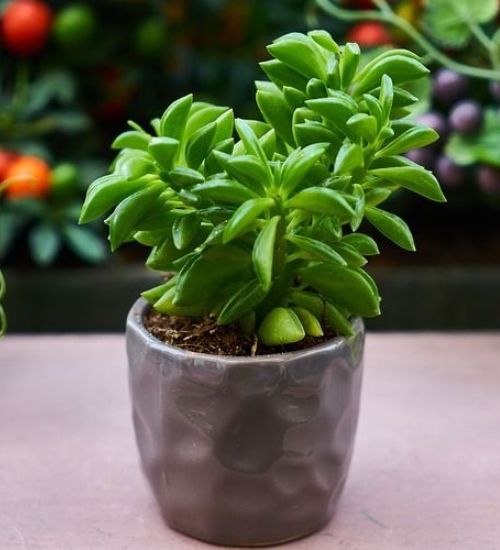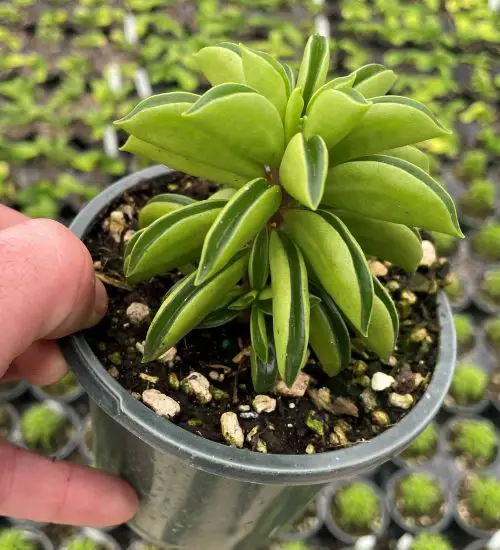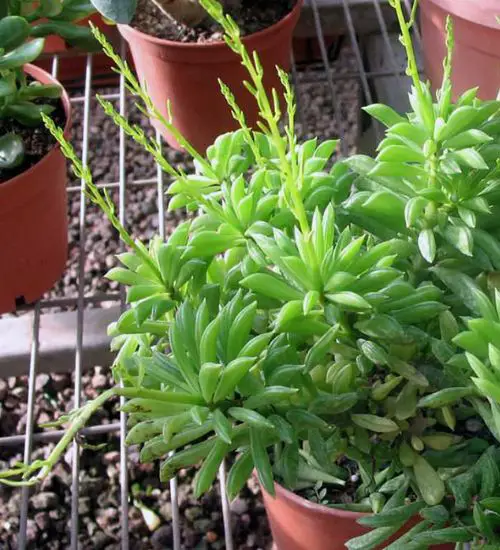Sun: Partial sun to partial shade
Water: Typical water needs for a succulent
Temperature: Zone 12a from 50° F to 55° F (10° C to 12.8° C) to Zone 12b from 55° F to 60° F (12.8° C to 15.6° C)
Winter Survival: Not cold hardy
Propagation: stem cuttings
Flower: rarely
Flower Type: Green, white
Toxic: Generally non-toxic to humans and animals
Dormant: winter
Space Requirement: Indoors
Common Problems: Plants may rot if overwatered, pests
Where to buy Peperomia dolabriformis?
Basc Care for Peperomia dolabriformis
Watering
You can water your succulent more than often in extreme conditions but make sure that the soil is completely dry before watering your succulent again.
One simple tip for you is that you can use some online apps to check the soil status before you go water your succulents. I would recommend the ThePlantsCheck app, it has some nice features there.
Fertilizing
Only feed this succulent during its active growing seasons which means winter. Use the right fertilizer applied in the right amounts. Applying half-strength balanced fertilizer every month or so is recommended for optimal results.
Do not fertilize during winter as the plant is dormant.
Sun & Location Requirements for "Prayer pepper"
When planting Peperomia dolabriformis, be sure to find a spot that gets partial sun and shade for optimal growth. A good rule of thumb is to provide four to six hours of direct sunlight per day with some protection from the midday heat.
As per this succulent profile, it is only able to stay healthy when the environment temperature is above the range of zone 12a from 50° F to 55° F (10° C to 12.8° C).
In order to protect Peperomia dolabriformis from freezing temperatures, it is important to provide adequate insulation and drainage. A layer of mulch or gravel will help protect the roots by keeping them warm during cold weather. In addition, protection from wind and sun exposure can help reduce the chances of frost damage.
Any succulents in the group will only need minimal space to grow. You can place your pot at your table or window. Outdoors is also a nice idea to put your pot.
Peperomia dolabriformis also benefits from some indirect light throughout the day as well, so make sure you give it enough space to soak up light without becoming too exposed to heat.
Propagation
Successfully propagating succulents is a great way to increase your collection of these unique houseplants. To propagate Peperomia dolabriformis by stem cuttings, you’ll need a few supplies including a sharp, clean knife and soil.
Toxicity

Peperomia dolabriformis is generally non-toxic to humans and animals. However, the plant may contain certain toxins which can cause mild skin irritation if it is ingested or comes in contact with skin. Therefore, it is important to keep the plant away from children and pets for safety reasons.
Pests and Diseases
Peperomia dolabriformis can be affected common pests and diseases like most of the other succulents such as mealybugs.
If you do spot any of pest signs, you can treat your succulent using below methods.
- Mealybugs: quarantine, clean infected plants, soapy water.
Besides that, to prevent serious health issues from happening, keep your succulent in a well-ventilated area and check it regularly for any signs of pests or health problems.


